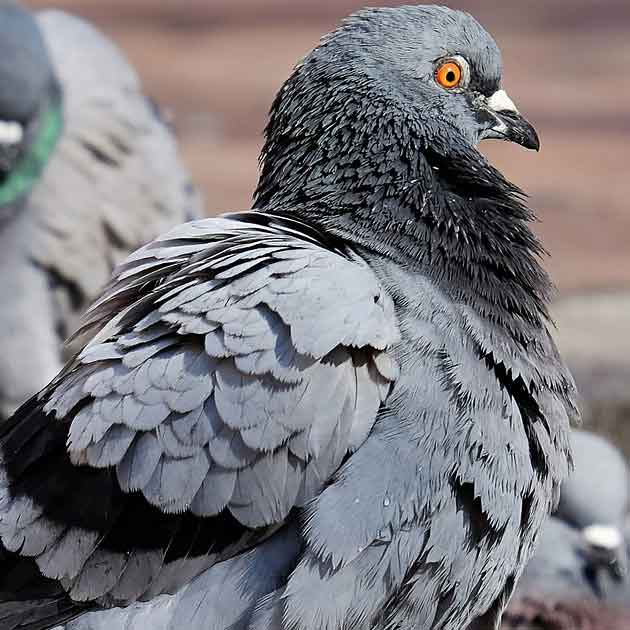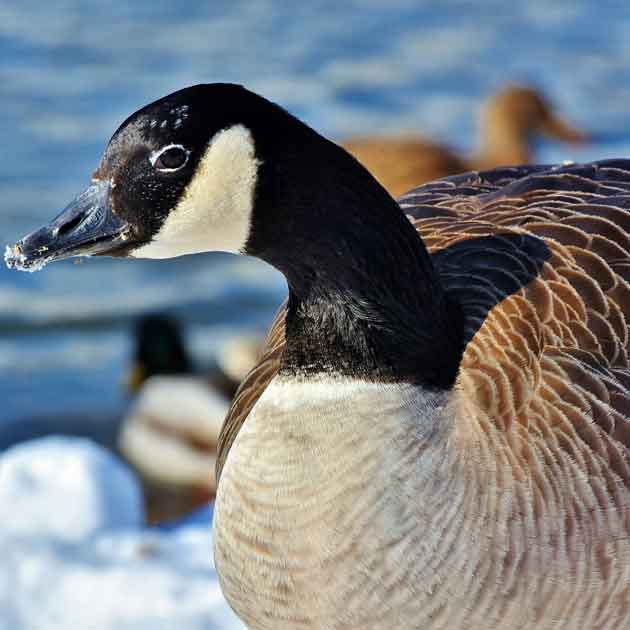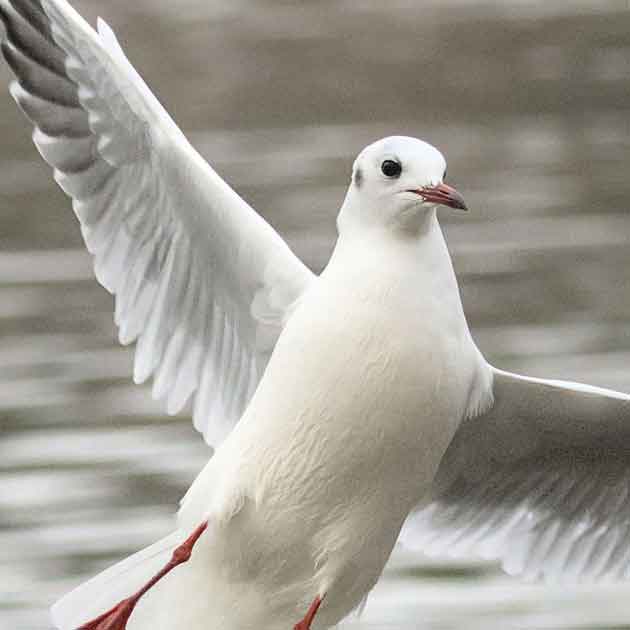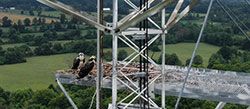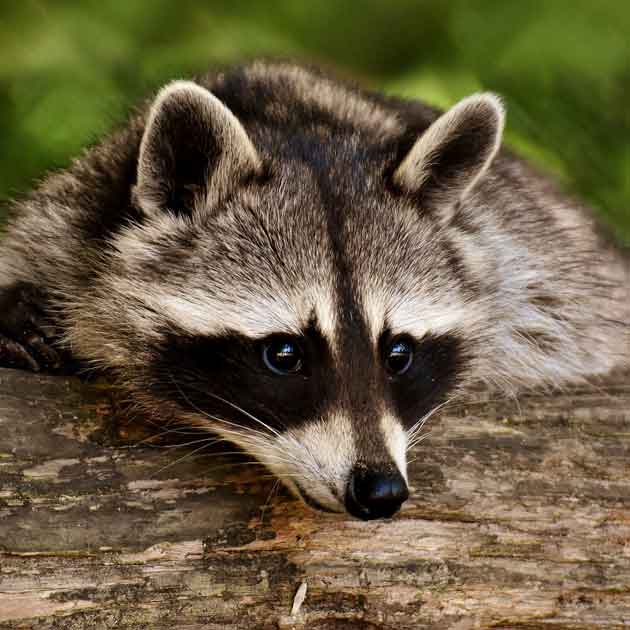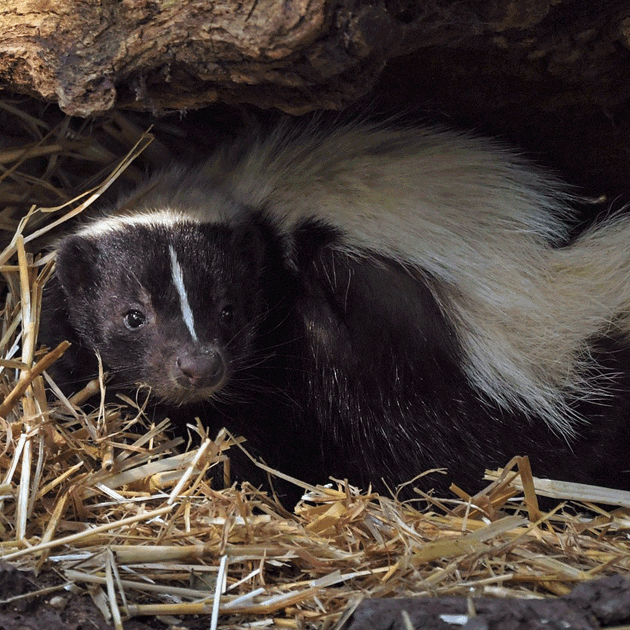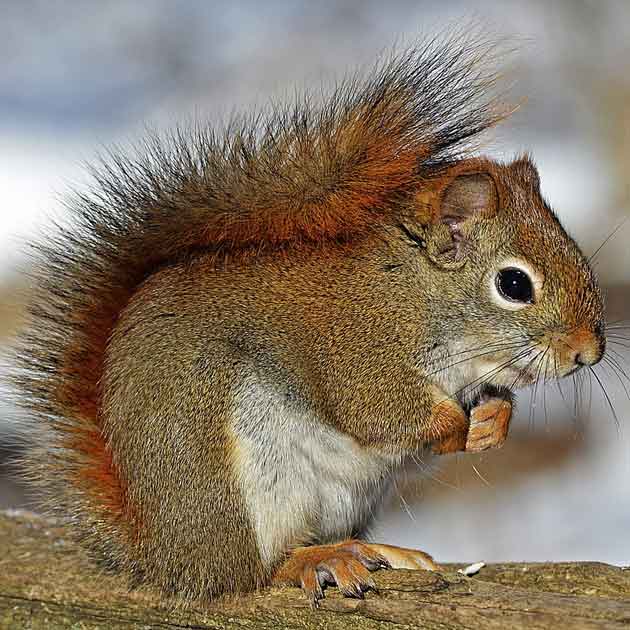Immediate help with
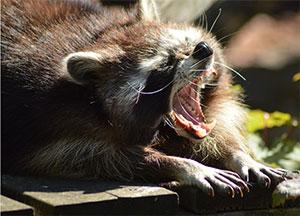
Raccoon Control & Removal Methods
Although keeping raccoons from getting into your home ought to be your first goal, there are a number of approaches that will help evict them if they did gain access to your home. After removal of the animal(s), it's equally important to determine where and how they got in and repair any damage left behind. Caution: It is of utmost importance to ensure that all animals are out before closing up any openings. The damage to premises will be greatly multiplied by a raccoon trapped inside, or by a female frantic to get back to her kits. Please consider that trapped animals left behind will starve and suffer a horrible death, leaving a smelly, decomposing carcass.
Passive Raccoon Removal
One-way exit devices
Removal of one or more raccoons from a building or similar confined space can sometimes be accomplished with a minimum of disturbance to the animals by allowing them to leave, on their own schedule, through a one-way exit. The exit door for raccoon traps should be a minimum of 25 cm x 25 cm. As emphasized above, care should be taken to ensure that no animals, particularly dependent youngsters, are left behind.
The primary downside of this method is that the offending animal(s) will remain in the neighbourhood where they may continue to cause problems.
Active Raccoon Removal
Hand-capture
In some circumstances, where a raccoon must be removed immediately and can be approached directly, it can be caught and moved to a transport container with the use of a long-handled net or catch-pole.
Live Trapping Raccoons
In Canada, raccoons must be trapped using traps that have been certified under the AIHTS. Depending on the raccoon trapping method used, a trapping training course and valid licence may be required. Note: Regulations relating to trapping devices and methods are subject to change; check with your municipality and/or visit the Ministry of Natural Resources for guidance.
Live-capture traps should be prioritized mainly in urban and semi-urban environments, even for the harvesting of individuals intended to be killed.
Cage Traps
Sufficiently effective, easy to use, and relatively safe for both user and animal, the cage trap is the primary tool for capturing raccoons in urban and semi-urban areas. They are socially acceptable: they allow any animals accidentally captured to be released, and also make it possible to transport captured raccoons.
Specifications:
A variety of cage trap makes and models are currently acceptable for use on raccoons, with the general proviso that they should be a minimum of 25 x 25 cm in height and width and at least 75 cm long and well constructed with heavy materials. Most traps commercially available care constructed of wire mesh, although there are a few solid metal and plastic models. In the case of wary raccoons, the use of a larger cage (eg. Havahart no. 1081 instead of no. 1079) can increase the chances of a successful capture.
To prevent raccoons from reaching through the wire to pull out the bait, and to minimize injuries to captured raccoons trying to reach through the wire in their escape efforts, it is recommended that mesh size on traps used for this species be no larger than 2.5 cm square. If using live-capture cages with a single hatch, position them against a wall, tree, rock or any other obstacle to prevent raccoons from trying to access the bait through the back of the cage.
The following points should be considered when using cages:
The general guidelines for cage trapping (Chapter ) apply. Traps that are to be left open continuously should be checked at least twice in each 24-hour period (morning and evening) or more frequently in high traffic areas or severe weather conditions.
- If a wire trap is to be placed on a hard surface such as concrete or pavement, it is particularly important to use an underpad of softer material (hard rubber mat, wood) to help prevent damage to the animal’s feet and claws from attempts to dig out of traps during the period of captivity. Underpads also protect substrates such as lawns and decks.
- Pan must be placed at an appropriate level;
- Correct point of contact between hook and groove in entry hatch;
- Smooth and functioning of anti-retreat system after activation;
- Solid structure (top and bottom side joints, hatch support and clamping rings at back of cage).
All of these must be checked in order to avoid the risk of escape or injuries such as scraping or abrasions on front paws after capture.
Baits and Lures
Although they are carnivores, readily attracted to meat or fish, raccoons are also receptive to sweets (marshmallows, fruits) and corn. To minimize the attraction of more carnivorous non-target animals such as local dogs and cats the use of such non-meat items is recommended in urban areas. Sweet scents such as almond extract and oil of anise may be used to help lure raccoons to the trap. Place a pile of bait behind the trigger and scatter a few small bits of bait outside the opening of the trap and just inside the entrance.
Unlike almost all other Greater Toronto Area animal control operations, as a licensed furbearer trapping company we can employ control methods IN ADDITION TO relocation of captured raccoons. This is why we guarantee the permanent removal of raccoons and other wildlife.
Call us if you're having trouble with raccoons in Toronto, North York, Scarborough, Brampton, Mississauga, Kitchener/Waterloo, London, Niagara or anywhere else in Southern Ontario.
What are the signs that Raccoons are present?
- Tracks typical of an animal walking with the entire sole of the foot on the ground, their distinctive tracks often provide evidence of their involvement in damage situations (see image »)
- Presence of excrement. Raccoon feces usually are dark and tubular and have a pungent odor. Droppings tend to be 2-3 inches long and 1/2-inch wide (like a dog's) and contain undigested food typically consumed by raccoons during the summer, i.e. fruit seeds, grains of corn, fish scales, shells. Droppings frequently are found in piles (called latrines).
- Animal sighting: Raccoons are easily recognized by their black and tan striped tail, and the black “robber” mask over their eyes, however, they are most active at night.
What are specific signs of Raccoon damage?
Raccoon Damage on Farms
- Corn crops: many cobs partially nibbled, with the husks pulled back and the leaves folded downwards. Stalks may be broken as the animal tries to climb to get at the ears
- Hen houses and farmyards: The extreme dexterity of their front paws allows raccoons to kill or injure poultry even when the birds are kept inside enclosures or cages, as they try to reach and destroy them through the wire mesh. Poultry are often found with their heads torn off and left a short distance from the body. The neck and breast may be torn open and chewed and the entrails consumed. ; Legs or feet of the young birds may be missing. Pieces of flesh may be found near water. The eggs are often broken lengthwise and the materials used to make the nest are disturbed. Eggs may be removed completely from nests or eaten on the spot with only the heavily cracked shell remaining. Raccoons can also destroy bird nests in artificial nesting structures such as bluebird and wood duck nest boxes.
Residential Raccoon Damage
- Refuse and compost: Raccoons are boisterous animals and so make a certain amount of noise when carrying out their searches for food and shelter such as when they raid garbage and compost containers in search of food
- Food left outdoors: Eating food for domestic animals such as pet food and livestock feed plus feed for wildlife such as birdseed;
- In gardens: Occasionally, especially in gardens containing fruit, tomatoes, melons, berries or sweetcorn, plants are eaten and damaged and tracks and excrement are left behind.
- Raccoons are attracted to lawns and gardens, especially after a rainfall when grubs and larvae are near the surface. They dig small round holes and will repeatedly turn over large swathes of freshly laid sod to un-earth worms, grubs and larvae. This particular type of behaviour is common when other sources of food are less abundant. They may return repeatedly and because of the dexterity of its front paws, the extent of the damage caused by the raccoon is generally greater than skunks.
Raccoon Activity near human dwellings
- Raccoons cause damage or nuisance problems around houses and outbuildings when they seek to gain entrance to attics or chimneys. In many urban or suburban areas, raccoons are learning that chimneys make very adequate substitutes for more traditional hollow trees for use as denning sites, particularly in spring.
- Raccoons leave their droppings in specific locations known as raccoon latrines or toilets; on roofs, in attics, in sandboxes and flower beds, as well as porches, patios. and areas open to the sky.
- While looking for suitable shelter, raccoons cause damage as they try to enter attics, wall cavities, or the inside of uncapped chimneys and fireplaces. Raccoons may tear off shingles or fascia boards in order to gain access to an attic or wall space (droppings are typical signs that a raccoon is present).
- Injury to pets may occur if raccoons are cornered.
How does one prevent Raccoon Damage?
Exclusion is usually the best method for coping with almost all types of raccoon damage. It is essential to understand that if no attempt is made to prevent animals' access to a property, buildings, or crops, the removal of one or more individuals will do no more than create a vacant territory and allow new individuals to establish a presence.
Method suitable for all types of damage: Completely eliminate sources of food and shelter which attracts raccoons or deny them access. By adopting various exclusion techniques suited for the different forms of nuisance potentially caused by the presence of a raccoon, problems can be resolved at the source, while respecting the wildlife around us.
Secure garbage, composters, pet food
Garbage, compost and pet food can provide a buffet style meal for raccoons, and once a free meal is found, they will return again and again. Since raccoons are very good at using their front paws, it is important to close down these potential food sources by:
- not leaving food waste in areas accessible to raccoons- storing garbage inside a garage, basement or secure bin until the morning of pick up
- sprinkling strong-smelling repellents such as oil of mustard, ammonia in or around the green bins and garbage
- installing lights around green bin and garbage storage areas
- cleaning up after barbecuing – raccoons are attracted to grease drippings
- using enclosed-type composters only
- feeding pets indoors and not purposely feeding wildlife
- keep poultry and rabbits safely cooped
- keep bulk pet and livestock feed stored indoors and/or in animal-proof containers.
Store garbage in metal or tough plastic containers with tight-fitting lids to discourage raccoons from raiding trash cans. If lids do not fit tightly, it may be necessary to wire, weight, or clamp them down to prevent raccoons from lifting the lid to get at garbage. Secure cans to a rack or tie them to a support to prevent raccoons from tipping them over.
Lawn and garden
- Sprinkling pure soap flakes on the lawn and watering thoroughly
- Mixing bone meal in garden soil
- Sprinkling diluted tabasco sauce over fruits and vegetables (wash before eating)
- Erect chicken wire fences around gardens
- Lighting up the area where raccoons are a problem. Use one 100 watt bulb for every 15 square metres of garden (50 ft. by 50 ft.).
Damage to sweet corn or melons can most effectively be stopped by excluding raccoons with an electric fence or placing plastic bags over the ears of sweet corn. In general, tape or fencing is more effective than bagging. When using tape, it is important to apply the type with glass-yarn filaments embedded within so that the raccoons cannot tear through the tape. Taping is more labor-intensive than fencing, but may be more practical and acceptable for small backyard gardens.
If sodded areas are not extensive, it may be possible to pin the rolls down with long wire pins, wooden stakes, or cover with nylon netting/ chicken wire until the grass can take root, especially if the damage is restricted to only a portion of the yard.
Also avoid the problem by laying turf in mid or late summer rather than in the spring or early summer, as it would appear that problems mostly arise at the beginning of the summer when food resources (fruit, berries and crops) are not yet available. During this period, females teach their offspring to dig for insects.
Poultry and Rabbits
Damage generally can be prevented by excluding the raccoons with tightly covered doors and windows on buildings or mesh-wire fences with an overhang surrounding poultry yards.
Small animals and poultry should be reared indoors in buildings that are "sealed and secure'. : In the case of outdoor breeding, the animals should be brought indoors at night given that the main predators, including raccoon, are nocturnal. Ensure all access points (doors and windows) are properly closed off, and block any openings wider than 10 cm x 10 cm to account for the raccoon's ability to squeeze through small openings, despite its relatively large size. Given the level of force raccoons are capable of exerting when attempting to gain access to a source of food, gaps should be blocked using heavy-duty wire mesh (min. 14 gauge).
Raccoons are excellent climbers and are capable of gaining access by climbing conventional fences or by using overhanging limbs to bypass the fence. A “hot wire” from an electric fence charger at the top of the fence will greatly increase the effectiveness of a fence for excluding raccoons. In high-density areas, breeders should be aware of all risk factors and adapt their practices accordingly.
Habitat
Eliminate access points like overhanging tree branches to structures; usually not practical as a sole method of controlling damage. Raccoons forage over wide areas, and anything other than local habitat modification to reduce raccoon numbers is not a desirable technique for reducing damage.
Repellents, Toxicants, and Fumigants
None are registered. Application of strong-smelling materials such as mothballs and ammonia have all been used in efforts to keep raccoons away from potential problem areas. Such repellant methods generally produce only temporary success, particularly if the source of attraction remains. Also keep in mind, that mothballs are toxic to your pets.
Frightening
Although several techniques have been used to frighten away raccoons, particularly in sweet corn patches, none has been proven to be effective over a long period of time. These techniques have included the use of lights, radios, dogs, scarecrows, plastic or cloth streamers, aluminum pie pans, tin can lids, and plastic windmills. All of these may have some temporary effectiveness in deterring raccoons, but none will provide adequate long-term protection in most situations.
Fencing
Ensure that any fencing meets local by-laws and legal requirements.
Because raccoons climb and dig readily, they cannot be excluded by ordinary fencing (wood, metal, or wire) alone, so fences should include an underground and aboveground barrier. The most common underground barrier is a 50 cm section of wire mesh or sheet metal with a minimum section of 30 cm embedded in the ground and the remaining 20 cm section folded outwards in an L shape.
The barrier can be attached to existing fences. To extend the life of wire mesh used for such a purpose, a coating of rust paint can be applied.
Materials useful for perimeter barriers such as patio blocks, concrete pads, or large rocks should butt up against the bottom of the fence (to prevent squeezing under) and should extend outward 40 cm or more.
Installation of wire fencing with a spacing of no more than 5 cm. It is advised to use rolls of wire 1.8 m high. The wire is attached to metal rods 1.8 m long, set 2 to 3 m apart and embedded at a minimum depth of 30 cm. The fence should contain three sections:
- One 50 cm section embedded in the ground at a depth of 30 cm with a surplus of 20 cm folded outwards in an L-shape;
- A middle section 1 m high;
- The top section (30 cm) is not attached to the rods and should be slightly folded outwards. The upper section could include a variation of the model shown above, whereby an electric wire is positioned overhead. This will make it impossible to dig underneath or access the enclosure by climbing over the fence.
When used with conventional fencing, the use of electrified wires at both the top and bottom (to prevent climbing over and squeezing or burrowing under) are recommended. The top wire should be suspended about 10 cm above, preferably offset to the outside, while the bottom wire is set near (but not in contact with) the outside of the fence, at a height of about 20 cm above the ground.
In some situations, a more temporary application of electric fencing may be sufficient.
The use of two parallel wires, one about 15 cm above the ground and the other 15 cm above the first, making a total height of30 cm has reportedly been successful. Two wires are recommended, but one wire 6 inches above the ground may be sufficient. Agricultural cooperatives and other stores that specialize in agriculture and farming sell the equipment you will need (metal wires, insulators, undulators, batteries and ground rods).
In all cases where electric fencing is used, it is important to remove any vegetation or other materials that may touch the wires and cause them to ground out. For increased security, further attention should be paid to trees planted in the area surrounding the enclosure to prevent raccoons from accessing the enclosure via overhanging branches.
The fence should be turned on in the evening before dusk, and turned off after daybreak. Electric fences should be used with care and appropriate caution signs installed.
How to Secure Your House from Raccoons
PREVENTING ACCESS TO SHELTER
Shelter-related raccoon conflicts occur in buildings occupied or otherwise in use (e.g., storage) by humans. The primary preventive actions are closing of doors, windows, and open vents, particularly at night, capping of chimneys, and covering other potential access openings with strong materials such as wire mesh, wood, concrete, or sheet metal. The area under decks and other structures may also be used by a determined raccoon.
Before any opening is closed off or any chimney is capped check to see that all raccoons have moved out, especially between March and July when there may be young present.
Systematically block any gaps that lead to porches, patios and sheds. It is also preferable to block access to all areas that might be used by the raccoons as a toilet or latrine such as: gardening patches, compost containers, flower beds and out door play areas such as sandboxes.
- Prevent raccoon access to chimneys or external fireplace outlets by securely fastening a commercial cap of sheet metal and heavy screen over the top of the chimney. This device, which is available in stores, should be made from heavy material and securely fastened to prevent raccoons from removing or breaking it;
- Check that the eaves, roof and overlay are in good condition for blocking access to your attic Raccoons can rip shingles, soffit and fascia off and chew holes in buildings;
- Remove unused TV towers and inspect any trees located around a home. Any overhanging branches that might allow access to a roof should be trimmed back;
- Check for signs (claw marks or other damage) of any attempts to access the roof or gutter via the corners of the building. If this is the case, wrapping the corners of buildings with 1 m x 1 m squares of smooth material will prevent raccoons from being able to get a toehold for climbing.
- Ensure all ventilation holes are secured using heavy, rustproof screening to cover open-air vents to prevent any incursions.
On-Site Release
After a live-trapped raccoon has been removed from the premises where its occurrence is considered a problem, it may (subject to local regulations) be released alive at or near the capture site.
This is less likely to be a viable option for an animal (or family group) that has actually taken up residence in the premises than for one that has been there only a short time and has no clear attachment to the site. In a U.S. study, of 19 female raccoons that were removed with their young and excluded from residences and then released on-site, 15 returned to another house (i.e., became a neighbour's problem) at least once. In the two months after release, about 60% of the den sites in use by those animals were in man-made structures, and 80% of those monitored to the following year denned in houses.
Translocation
In most jurisdictions, there are distance limits for the relocation of raccoons. The operating permit may authorize transport and release of live-captured raccoons in habitat judged suitable at a specified distance from the capture site. Translocation is generally not a demonstrably humane outcome for the animal.
Translocated raccoons, mostly "nuisance" animals live-trapped in urban areas and moved to rural locations, travel extensively for a few weeks after release, often moving 20-30 km during that period and one case of 295 km is on record.
Moving animals any distance from their home area can be ineffective for the following reasons:
- animals already living there may defend their territory and kill newcomers;
- animals may return to the area where they were caught;
- shortages of unoccupied dwelling sites and food may result in starvation;
- relocating animals could contribute to the spread of disease;
- you may simply give the problem to someone else.
In some conditions, the capture/relocation of raccoons can be a viable option. Such an approach should only be adopted in the following circumstances:
- Sectors far away from areas at risk of rabies;
- Regions where population density is low or moderate;
- Cases in which a sufficient number of suitable relocation sites are available then as much as possible, the location of such sites should also limit the risk of simply shifting the problem elsewhere.
- It is strongly recommended not to relocate raccoons too far away from the capture site. It is important to remember that translocation carries the risk of introducing diseases to areas not yet affected. In and around sectors where rabies is a problem, extreme caution is needed given the very real dangers of the virus spreading.
General Biology, Reproduction, and Behavior
Physical characteristics: The raccoon (Procyon lotor), is a stocky mammal about 2 to3 feet (61 to 95 cm) long, weighing 10 to 30 pounds (4.5 to 13.5 kg), though well-fed individuals may reach weights of 14 kg or more, at maturity. Male raccoons are larger than the females with an average body length of 80 to 95cm nose to tail tip. Females average 73 to 85 cm in length. The raccoon is distinctively marked, with a prominent black “mask” over the eyes and a heavily furred, ringed tail. The 5 clawed toes on the front and hind paws resemble hands and provide the animals with high dexterity.
Distribution: Southern Canada except Newfoundland and Labrador. Its range is expanding northward as land is cleared for development and farming.
Birth to Maturity: Raccoons usually mate in February and March. After a 63 day gestation period, the mother will deliver 3-5 kits once a year. Newborn kits weigh about 75g. They will open their eyes at about 3 weeks of age and will venture outside of the brood den by 6 weeks of age. By 2-4 months, they will be completely weaned and able to look for food with the mother. At 12 months they have matured. The average life expectancy is 3-5 years.
Habitat: This highly adaptable animal lives in a wide range of habitats. Raccoons are found in urban, rural and wilderness areas, including treed areas near water, farmland and building structures.
Territory: Raccoons are territorial and usually solitary. Adult males occupy areas of about 3 to 20 square miles (8 to 52 km2), compared to about 1 to 6 square miles (3 to 16 km2) for females. Adult males tend to be territorial and their ranges overlap very little. The home ranges of adult females and yearlings of both sexes have been found to overlap considerably, both among themselves and with those of adult males. Population: Raccoon populations consist of a high proportion of young animals, with one-half to three-fourths of fall populations normally composed of animals less than 1 year in age. Usually less than half of the females will breed the year after their birth, whereas most adult females normally breed every year.
Abundance: Raccoons may attain very high numbers where food is abundant. Studies in areas of the United States where rabies is a concern have obtained density estimates averaging 15 animals per km2 in rural habitats and 75 per km2 in urban areas. York University research tracking urban raccoons, shows they live 150 per square km–50 times the density of rural raccoons. Raccoon density in southern Ontario averaged 3.4–13.6 individuals/km2 according to a 1994–2007 rabies control study compared to 1.5/km2 in northern Ontario.
Habits: Raccoons are not particularly afraid of humans. Raccoons are nocturnal, but can adapt their schedule according to available food sources. Raccoons do not truly hibernate, but they do “hole up” in dens and become inactive during winter. This period of inactivity may extend for weeks or months depending on weather conditions. Raccoons may lose up to half their fall body weight during winter as they utilize stored body fat. It is susceptible to starvation, particularly in the first year of life and during long winters. The raccoon has excellent vision and hearing. Their pointed muzzle, toes and claws have a well-developed sense of touch. Raccoons are good swimmers. They have a good sense of balance and can climb down trees and structures both backwards and forwards. They can run at speeds up to 15 km/hr.
Food: Raccoons are omnivores, eating both plant and animal foods. Their diets include; young birds, birds’ eggs, small rodents and other small mammals and reptiles, fish, frogs, shellfish, insects, fruits, vegetables, nuts, berries, corn and other grains- both wild and cultivated. As scavengers, they also eat garbage, compost, lawn pests, roadkill and other carrion, and pet and livestock food.
Denning: Raccoons live in tree hollows and logs, tree branches, under tree stumps, in caves and rock crevices, under culverts, in abandoned burrows of other animals and human-made structures, whether abandoned or not. Three den types are used: refuge dens, brood dens and over-wintering dens. The number of dens utilized by one female and kits may number up to 20. Continued use of just one den site is common in urban settings where reliable food supplies are nearby. Lined with leaves or wood chips, the preferred den sites are usually more than 3 metres above the ground.
Predators: Mountain lions, bobcats, grey wolves, red foxes, coyotes, fishers, and raptors such as Great-Horned Owls; however, raccoons are not heavily preyed on.
Related Articles: Raccoon Control and Removal in Mississauga » | Raccoon Removal Services in Brampton »Raccoon Removal Services in Brampton »
Page Summary: We humanely remove raccoons from your home or property. We guarantee results.


